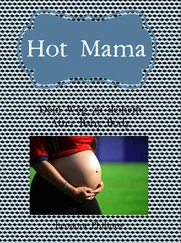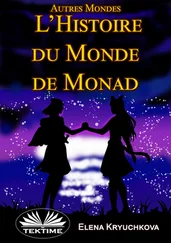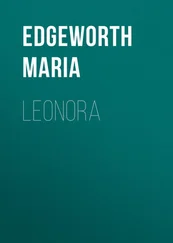‘What are you doing, Miss Carrington?’ the headmistress enquires on seeing her crouched over her exercise book.
‘I am composing a manual of disobedience.’
‘Your mother informed me you were interested in drawing.’
‘Now it’s writing.’
At break time Miss Penrose, who never leaves the building without first putting on a hat and gloves, studies her pupils through the window and observes Leonora instructing them: ‘We are now going to play horses.’
Most agree, and most of all Elizabeth Apple. They begin a kind of wild dance, stampeding in all directions, until the tea table is upended and its china tea set smashed. They continue on at a canter, out into the garden, manes flowing as tremulously as waterfalls, as they ride on one another’s backs, whinnying.
‘Girls, what is going on? Have you completely lost your heads?’
Miss Penrose cannot believe her eyes. From the family home at Hazelwood, Carrington assures her that he will reimburse her twice the cost of the tea table and its shattered porcelain tea set.
‘My daughter will never do such a thing again. From now on, she is forbidden to play at horses.’
She is both Miss Penrose’s youngest and most original disciple. The headmistress studies how she responds. Leonora’s eyes open wide as she appears to be listening to a voice within her. The deepest depths of her eyes emit signals of light. She enters museum galleries with reverence, attempting to muffle even the sound of her shoes on the floor, keeping her hand over her mouth. Is she suffering palpitations? Since the museum guard allows nobody to cross the wire, she keeps her distance to admire the paintings, fearful of activating the alarm. She returns over and again to the same pictures, and Miss Penrose asks her:
‘Why are you so particularly impressed by the Sienese School of Francesco di Giorgio and Giovanni di Paolo?’
‘Because of their use of colour, especially their shades of vermilion, chestnut, gold — oh how I love that gold! I would like to use those colours in my own painting. How was it possible for Cimabue to be so ahead of his time?’
Her friend Elizabeth Apple shares her enthusiasm. The two take notes and repeatedly escape Miss Penrose, especially during lessons in etiquette or in learning how to date antiques. Neither of them are particularly interested in learning whether a piece of furniture belonged to the period of the Directory or to Louis XV.
‘Let’s go to Siena, Elizabeth!’
‘They could expel us for that!’
‘How can you be so easily scared?’
Leonora decided they should take a bus there without first informing Miss Penrose. They go via Arezzo to visit the work of Piero della Francesca.
Elizabeth is a coward and attempts to restrain her. ‘Let’s not go down this alley, it’s very dark’; ‘I think there’s a man following us’; ‘We’d better go back now.’ The last thing Leonora wants to do is to go back now, and she enters an antique-shop-cum-cavern-of-delights covered in dust and cobwebs, the fibres of which form bridges between the hand of a metal charioteer and a porcelain plate before continuing on to envelop a Florentine dagger. ‘We recovered these books from a Venetian palace,’ comments a different kind of shipwreck survivor, an old man, indicating a yellowing stack. Who knows what varieties of fungus are growing in this disturbing Aladdin’s cave?
Leonora feels in her element, curious and confident in equal measure. In here, even the dust is magical. Suddenly, in the midst of all the objects, there shines a pair of yellow cat’s eyes. There are quantities of cats in Florence, and in Rome their cradle is the Colosseum. Leonora wishes she could live out her days in just such a cave, for she knows she would feel secure there. She experiences a similar sense of exaltation in Florence when she crosses the Piazza della Signoria, the Ponte Vecchio, the Piazza del Duomo and the Lungarno.
Her veneration puts no brake on her audacity: she caresses the statues and climbs up to the altar in St. Peter’s Basilica to view the tabernacle of the Holy Sacrament at close quarters. If anyone had seen her, she would have been shown the door. She acts without due circumspection, without bowing her head or crossing herself. She walks along the banks of the Arno, in the Oltrarno, through the Lungarno Serristori, where the green of the park reminds her of her mother’s native Ireland. From a woody embankment on one side of the river she can see not only the opposite bank, but right into the city as far as the Uffizi Gallery.
One morning, torrential rain causes the Arno to burst its banks, covering the statues in mud. In response a different flood, one of young people from across the whole of Italy, gather at the National Library, to salvage the books at risk. There Leonora meets Giovanni, a young man in his twenties, with striking eyes and an easy smile who, together with the rest, is removing mud from the books, one page at a time.
‘I arrived from Rome by motorbike with my friends,’ he tells her with a smile.
‘Where do you sleep? And where do you eat?’
‘I sleep in a fabulous wagon-lit train compartment parked on some dead rails, and people on the nearby street provide us with food and treats. I’ve never eaten so well in my life! As for you, what do you do?’
‘I write and draw with both hands, it’s my special gift.’
‘It’s a gift like being able to wiggle your ears.’
‘No, it’s something only I can do. It’s me who’s special.’
‘I think you might be right,’ Giovanni smiles broadly as he says goodbye.
Her friends suggest they go and have tea at the Giubbe Rosse. Leonora is keen:
‘Please may I bring Giovanni Proiettis? He’s one of the students who came here from Rome to rescue the books from the library.’
‘Your parents wouldn’t approve,’ is Miss Penrose’s response, from high above her twiggy legs.
Rather than offer her support, the fair-haired and languid Elizabeth Apple comments:
‘I wouldn’t dream of embarking on a relationship with someone utterly unknown.’
‘But you and I were utterly unknown to one another when we came through the door of Miss Penrose’s establishment.’
‘That doesn’t count, since we belong to the same social class.’
‘I don’t belong to any class at all. I am a horse.’
‘Oh come on, Leonora, please .’
‘I’m going to see this young man, whether they allow me or not. If you like, you can tell Miss Penrose that I’ve arranged to meet him in the Uffizi Gallery.’
‘Is that where you’ve been meeting up with him so far?’
‘Obviously, yes. And I like him better today than I did yesterday, and tomorrow I shall most likely like him better still.’
Miss Penrose writes to Harold Carrington: ‘Your daughter is overly temperamental.’
Leonora’s passions are aroused by every new painter she discovers. ‘That’s how I’d like to paint, that’s who I want to be.’
It proves impossible to get her out of the museum. One afternoon she can’t be found, until Miss Penrose encounters her seated in front of Simone Martini’s Annunciation.
‘The Virgin is in a bad mood. She doesn’t want to have to be the Mother of God.’
‘Your daughter is uncontrollable,’ reads the next message to Maurie. ‘No-one ever has the least idea what she’ll do next, nor how she’s going to react.’
If getting to know Padua, Venice and Rome lifts her out of herself, Florence makes her fall in love. In the Uffizi Gallery, Leonora discovers Uccello and, most of all, Arcimboldo. His portraits apparently composed of vegetables draw her back to the fine line between reality and imagination, about which she talked so much with the Jesuit, Father O’Connor. Arcimboldo’s strange heads composed of roots, fruit and legumes — are they hallucinations? Are his mental faculties different to those of other men? She is attracted by lips composed of mushrooms, strawberries or cherries. At times the cherries are used for eyes, and turn red. ‘This painter has to be sick,’ comments Miss Penrose, who serves as their guide. Leonora feels a surge of rage rise in her throat.
Читать дальше












